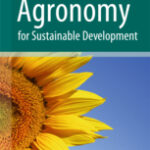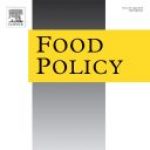Publication type: Journal Articles

Addressing Information and Credit Barriers to Making India Open Defecation Free and Improving Child Health: Evidence from a Cluster Randomized Trial in Rural India
Abstract Read a policy brief based on this study. Background Open defecation (OD) remains a significant public health challenge in India, contributing to adverse child health outcomes. Eliminating OD and improving child health necessitates both universal access and adoption of toilets. Despite the success of...

Understanding the Determinants of Farmers’ Adoption of Artificial Insemination in Livestock
Abstract Read a policy brief based on this study. The adoption of artificial insemination (AI) in livestock is a crucial factor in enhancing breeding efficiency, livestock productivity, and income opportunities for farmers. However, the adoption of AI among farmers can vary significantly, influenced by a...

Determinants and Income Effects of Small Farmers Selling to Supermarkets versus Traditional Market Channels in Four Regions of India
Abstract Read a policy brief based on this study. Using endogenous switching regressions to calculate transitional heterogeneity which we have used to build counterfactual scenarios to identify the treatment effects for both sellers to supermarkets and sellers to traditional markets, the results support neither a...

Transitions to Crop Residue Burning Have Multiple Antecedents in Eastern India
Abstract Far removed from the agricultural fire “hotspots” of Northwestern India, rice residue burning is on the rise in Eastern India with implications for regional air quality and agricultural sustainability. The underlying drivers contributing to the increase in burning have been linked to the adoption...

Women’s Empowerment and Intra-Household Diet Diversity Across the Urban Continuum: Evidence from India’s DHS
Abstract Read a policy brief based on this study. Women’s empowerment has been associated with improved nutritional outcomes in various settings. However, the gains from empowerment do not necessarily accrue to different members of the same household in the same manner. Furthermore, the relationship between...

Reducing the True Cost of Food-Based Safety Nets: Evidence from India’s Subsidized Food Program
Abstract Public procurement of food plays a pivotal role in determining the production and consumption of various food items. This is particularly true for staple grains in countries such as India, where the government procures over 40 percent of rice and wheat. This grain is...

Demand-Side and Supply-Side Factors for Accelerating Varietal Turnover in Smallholder Soybean Farms
Abstract The rapid growth of soybean cultivation in the world augurs well for achieving SDG2 of promoting sustainable agriculture, ending hunger, achieving food security, and improving nutrition. India started promoting soybean cultivation in the 1970s to combat dietary protein deficiencies and augment smallholders’ incomes. However,...

Did the COVID-19 Lockdown Reverse the Nutritional Gains in Children? Evidence from Rural India
Abstract Read a policy brief based on this study. To address the missing link that goes beyond the changes in dietary consumption and food expenditures to assess the impact of the pandemic on child undernutrition, specifically anthropometric outcomes, this paper uses primary panel data (pre-...

Leveraging Men’s Education as an Effective Pathway for Improving Diet Quality: Evidence from Rural India
Abstract Read a policy brief based on this study. Investing in nutrition-sensitive sectors such as education can be an effective strategy for combatting malnutrition. In this paper, we analyze the role that men’s education plays in determining dietary diversity outcomes using primary data from 3600...

Hybrid Mustard and Biotechnology: Pathways for Doubling Farmers’ Incomes and Nutritional Security
Abstract The government’s decision to move ahead on the much-delayed genetically modified mustard developed by the University of Delhi signifies a turnaround and bodes well for the country’s food system. Numerous tests over the last 20 years prove its safety for food, feed, and the...

